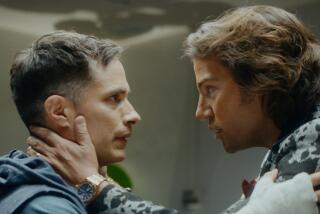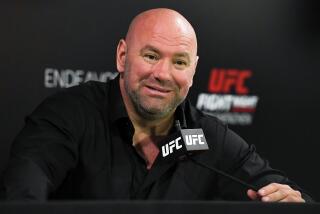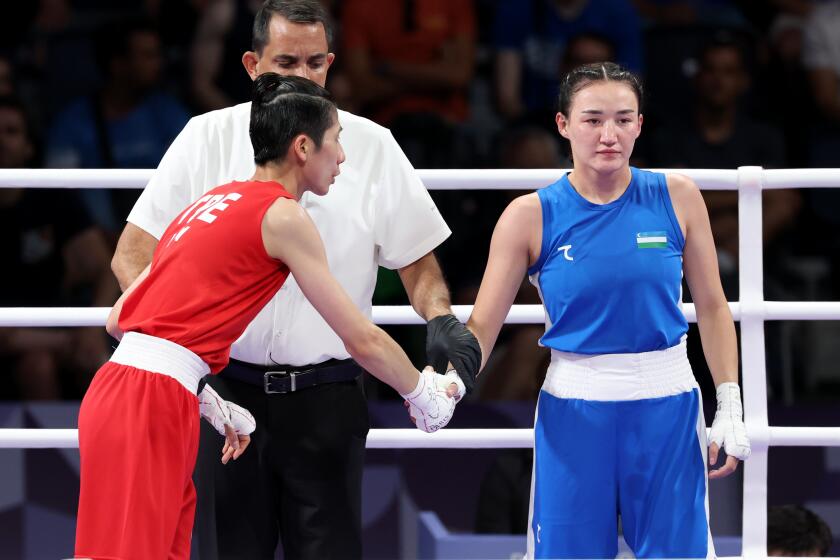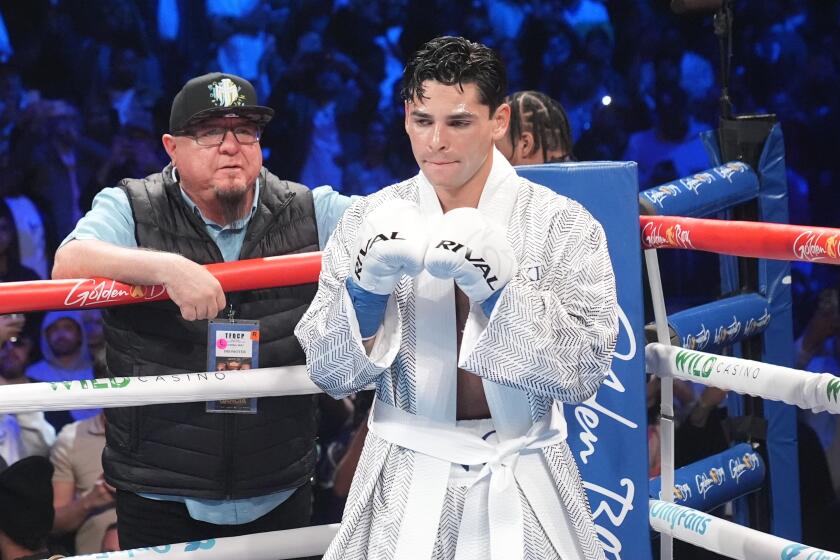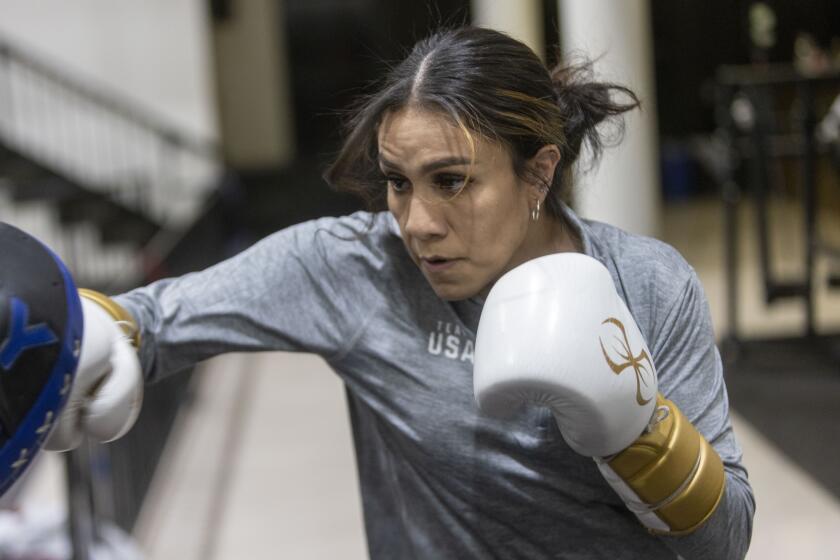Going to great heights
TOLUCA, Mexico -- For more than six centuries Mexicans have believed there are special powers hidden in the towering Nevado de Toluca volcano.
In pre-Columbian days, Aztec religious leaders would hike the 15,354 feet to the volcano’s two craters to make offerings to the feared rain god Tlaloc.
During the last five years, 34-year-old boxer Juan Manuel Marquez has made his own spiritual trek up the side of the mountain, running through the thin air and subfreezing pre-dawn chill every weekend in search of new life.
And the mountain, he’s convinced, has provided it.
“I can feel the change since I started coming here,” he said after a recent trip to the peak. “I’ve run with youngsters that are 19, 20, and they can’t keep up. I can’t say what’s coming [but] if I keep training like we’re training and the preparation continues working, I can keep going.”
Marquez, a super-featherweight, will have a chance to test that theory Saturday when he puts his World Boxing Council title on the line against Filipino Manny Pacquiao in Las Vegas. The bout is a rematch of the most frustrating fight of Marquez’s career, a controversial 2004 draw, one of the few blemishes in a 15-year career that has produced 48 wins, 35 knockouts and four world titles.
And Marquez does appear to be getting better with age. Since he started training at Toluca, an hour west of Mexico City, he has lost only one of 13 fights, winning all four of his championships, scoring four knockouts and upsetting countryman Marco Antonio Barrera in a WBC title fight a year ago.
“This is fundamental,” he said of his climbs to the mountaintop, where the thin air makes it a struggle just to walk, much less run. “You can’t do the work unless you have the strength and mentality to get up and do it. You have to prepare yourself mentally and physically to run at altitude.”
The benefits of training at altitude are hardly a secret. Since the thinner air contains less oxygen, the body adapts by producing more oxygen-carrying red blood cells, which the body retains for as many as two weeks after returning to sea level. As a result, altitude training can improve speed, strength and endurance.
Boxers have been trying to capture that for years. Julio Cesar Chavez once trained in Toluca and both Oscar De La Hoya and Shane Mosley built training facilities at Big Bear in the San Bernardino National Forest, drawing fighters such as Barrera, Roberto Guerrero, Floyd Mayweather, Vernon Forrest and Fernando Vargas.
Yet not all altitudes are created equal. At about a mile and a half above sea level, Big Bear is only half as high as Marquez’s camp at Toluca’s summit. And that makes a big difference, said Abner Mares, an undefeated bantamweight from Hawaiian Gardens who has trained on both mountains.
“I’d be running this at Big Bear with a smile,” Mares panted after dropping out of an hour-long run with Marquez after just 20 minutes. “It’s not so much the breathing, it’s just the legs.”
But for Marquez, there’s more to the training than just the thin air and steep hills. While De La Hoya’s $2.1-million Big Bear retreat featured a 3,900-square-foot main house, a three-bedroom guest house, an indoor spa and waterfall, a steam room, vaulted ceilings and a putting green, Marquez’s camp atop Toluca consists of a squat concrete building without heat or electricity.
“We’re just there to run, train strong and leave,” said Marquez’s younger brother Rafael, a former bantamweight and super bantamweight world champion. “Why would we want luxuries? We’re in training.”
So the Marquezes and their occasional training partners spend sleepless nights shivering under layers of street clothes and as many as three blankets, then rise before the sun to run as a coach follows them in Juan Manuel’s green Pathfinder, the SUV’s headlights casting an eerie glow on the rugged, rock-strewn trails.
Juan Manuel runs in a down ski jacket, sweat pants and a wool cap, carrying four-pound weights in each of his gloved hands. The hardships are all part of the strategy, said Ernesto Salgado, a former cyclist and marathon runner who devised the brothers’ training regime.
“We’re always saying that between the humility and the suffering is where you’re going to go forward,” he said. “When you run alone in the mountains, under adverse conditions, you’re training your mind. Because your mind can say no mas. And your legs can keep going.
“That’s when you form your character, your will. And how you train is how you compete.”
But then again, the Marquez brothers have gotten by without creature comforts for most of their lives. Two of eight children born to a former pro fighter in the hardscrabble Mexico City barrio of Iztapalapa, near the gym where they now train, the boxers didn’t consider themselves poor, Rafael said.
“But with eight kids,” he added, “money didn’t go far.”
Shortly after the boys were old enough to stand, their father strapped pillows to their tiny bodies and taught them how to spar.
The boys’ first real fights came not in the ring but in the streets and schoolyards of Mexico City’s most populous borough, where drug trafficking was almost as popular among the locals as boxing.
“It was dangerous,” Rafael said. “So we learned from the time we were little how to defend ourselves.”
“In the street,” Juan Manuel added playfully, “I was undefeated.”
He has done almost as well in the ring, winning 35 of 36 fights and two Golden Gloves titles before turning pro in 1993, 2 1/2 years before his brother. He also was the first Marquez to win a world championship, capturing the IBF featherweight belt with a win over Remigio Molina two weeks before Rafael won the first of his two titles.
Now comes the rematch with Pacquiao, who knocked down Marquez three times in the first round of what the Mexican still calls his “hardest and most difficult fight.”
“It was a great fight, but I felt I won,” said Marquez, who climbed off the canvas to dominate the rest of the 12-round bout. “This is my opportunity to show who won on Oct. 8, 2004.”
And he said he has kept that thought in his head through every step of his runs up Nevado de Toluca, the fourth-highest mountain in Mexico. Oh, and he has been thinking about one other thing: Pacquiao has been training at sea level.
“In training, I feel like I’m getting more air, like I’m stronger, more complete,” he said. “Better physical conditioning leads to more confidence.
“There are some fighters who forget about the preparation and just live off their fame. We dedicate ourselves to the preparation.”
--
More to Read
Go beyond the scoreboard
Get the latest on L.A.'s teams in the daily Sports Report newsletter.
You may occasionally receive promotional content from the Los Angeles Times.

